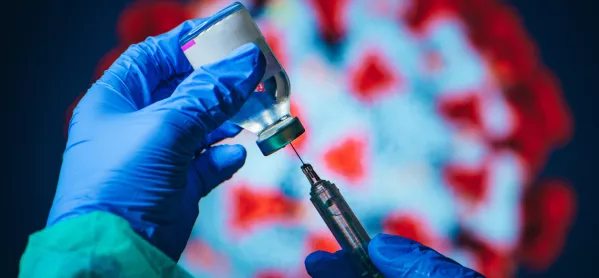5 key Covid terms your students should understand

Teaching science, it has become clear that one of the biggest boundaries for my students is their scientific literacy. That is, an understanding of some of the specialist (or tier 3) vocabulary that our syllabus includes.
Take photosynthesis, for example. As a person who has studied science for most of my life, I can easily split this word and figure out what it means.
“Photo” refers to light and “synthesis” means to create. I can therefore work out that photosynthesis probably means creating something with light. But to a key stage 3 student it can feel like a foreign language.
The Covid-19 pandemic has meant that much of our mainstream media has been focused on health and disease. We have seen and heard specialist terms on the news every day over the past year.
Is it right to assume that the young people we work with - and the general public - have enough scientific literacy to be able to appropriately engage with these terms? Without it, there is a risk that they may not understand the information they’re being presented with.
Covid: The scientific language of the pandemic
Here are some of the most frequently used scientific terms in UK news stories at the moment and how to talk about them.
New variant
To understand what a variant is, we must first understand what a virus is. Unlike bacteria or fungi, a virus is not a living thing, it is simply a molecule (more specifically, it is genetic material in a protective capsule).
Viruses need to infect a cell in order to reproduce. When a person is infected with a virus, it takes over cells in their body, reproduces and then bursts out of those cells, destroying them. It is this that causes us to become ill.
Because a virus isn’t alive, it is very common for it to change (or mutate) into a new variant. This is basically due to the virus making a mistake when it reproduces, and is really common in viruses like Covid. Mutations are completely random and some mutations even negatively impact the virus itself. Less sci-fi horror and more “oops”.
Vaccine
Vaccines are substances that, when entered into the body, trigger the production of antibodies.
A vaccine can trigger the same response by the body without the risk of us becoming ill with the disease. It also allows the body to prepare in case we come across that disease again, when the immune response will be larger and quicker. This means we are at less risk of becoming ill.
Clinical trials
A clinical trial is a multi-step process that essentially ensures that a new drug is both effective and safe, based on test results from human subjects. Before a clinical trial can begin, the drug must pass the stages of a pre-clinical trial (before actual patients, when the drug is developed and deemed safe to test on humans).
After this, clinical trials can begin on healthy individuals to test for dosage, side effects and if the drug actually works. Once these trials have shown that the drug is both safe and effective, the drug is released to the population, but monitoring continues.
Immunity
Your immune system is a network of cells that are constantly on the lookout for foreign bodies (things that don’t look or behave like your own cells.) The main component of this system is the white blood cells.
White blood cells not only detect foreign bodies, they also start a chain of reactions that increase the search party and destroy what they find. White blood cells do this by releasing antibodies.
Immunity, as it is described in the media, is actually referring to “active immunity”, where the body produces a large amount of antibodies following an infection or vaccination: this means that the body is ready to attack should this happen again. If reinfection does occur, a person is likely to destroy the foreign body before it begins to make them ill.
Transmission
The prefix trans- comes up a lot in science and means “to move across”. So in terms of disease, transmission is the ability of the disease to pass from person to person, and the transmission rate is how quickly this can happen.
Diseases can be transmitted in a variety of ways - through touch, air or by consuming contaminated food - depending on the structure of the pathogen. Transmission rates are also affected by how long a pathogen can survive outside of the human body. This also varies between pathogens.
There are many more terms that have been in the mainstream in the past year or so, and it seems like the government is trying to reduce the amount of technical terminology used in briefings (the move from “vaccine” to “jab”, for example).
It is unclear whether this changes public opinion on the information presented, and despite this, scientific literacy continues to be a barrier for many.
Emily Buckle is a science lead teacher in West Yorkshire
You need a Tes subscription to read this article
Subscribe now to read this article and get other subscriber-only content:
- Unlimited access to all Tes magazine content
- Exclusive subscriber-only stories
- Award-winning email newsletters
Already a subscriber? Log in
You need a subscription to read this article
Subscribe now to read this article and get other subscriber-only content, including:
- Unlimited access to all Tes magazine content
- Exclusive subscriber-only stories
- Award-winning email newsletters